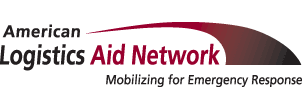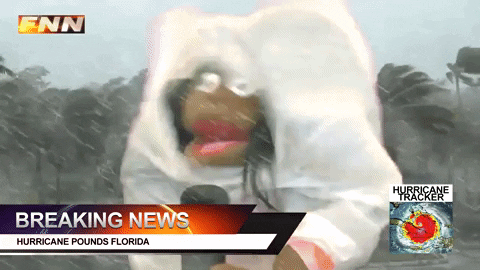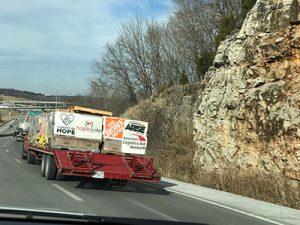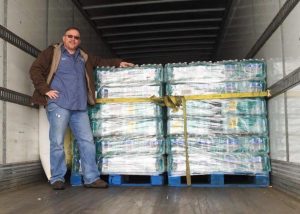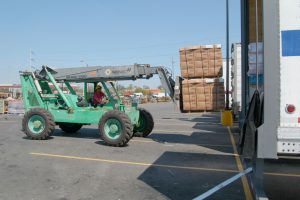Each year, a new wave of hurricanes presents people with several new opportunities to learn best storm practices.
Many individuals take these lessons to heart, creating smarter emergency plans, building better disaster kits, and being more willing to collaborate with public and private-sector partners to help facilitate quicker recovery.
But others seem to be caught in their own version of the movie Groundhog Day – except that instead of endlessly repeating the same day, they repeat the same behaviors.
The question is which kind of person are you?
Can you confidently say that you’re improving your ability to prepare for, get through and respond to hurricanes and tropical storms?
Or are you perhaps guilty of one or more of the following recurring hurricane season mistakes?
Treating any hurricane as minor
When it comes to the Saffir Simpson hurricane scale, it’s not uncommon for people to equate a lower number with the term “no biggie.” As a result, they’ll only heed local safety requests if a hurricane is expected to be a Category 3, 4 or 5 but not when it’s predicted to be a Category 1 or 2.
As evidence of why you shouldn’t do the same, consider the case of Hurricane Florence – and many others like it.
When this storm made landfall as a Category 1 in 2018, people thought it wouldn’t be a big deal because it was “just” a minor hurricane. What they didn’t count on was the storm’s slow-moving nature that would cause sustained winds, heavy rains and widespread flooding – and ultimately claim more than 50 lives.
Never assume any hurricane will be a walk in the park. While not every storm winds up being a Harvey, Irma or Maria, all of them have the power to be deadly and destructive, especially for people who don’t prepare.
Failing to prepare because “hurricanes never hit here.”
Living in a coastal area that hasn’t been hit by a recent major hurricane can be a double-edged sword, particularly if you’ve had a lot of near misses – because every time a hurricane almost hits your community, it increases the risk that you won’t take future hurricane predictions quite as seriously.
No matter how often you’ve dodged major hurricane bullets in the past, don’t be lulled into a false sense of safety. Just as important, don’t ignore local safety advisories (like requests to evacuate) because you’ve “been there, done that for no reason” multiple times.
Each severe weather event truly is unique, and each has the potential to be the one that finally hits your community in a very big and destructive way.
Panic over-buying
What is it about any disaster that turns a trip to Piggly-Wiggly, Costco or Wal-Mart into a contact sport – and every shopper into a real-life version of Hoarders?
Although it’s certainly wise to procure enough supplies to get you and your family through a few days’ worth of power outages or supply chain interruptions, please resist the urge to buy as if you’re preparing for the apocalypse. When too many people do that, it creates unnecessary product shortages and stockouts – and places additional strain on a supply chain that’s just about to get even more congested and constrained. Better yet, start to buy a little extra in the weeks leading up to hurricane season so you’ll have extra supplies on hand if needed.
And speaking of products. . .
Hosting a product collection drive
Several years ago, a Gulf Coast organization requested product donations to help with Hurricane Maria relief. Unfortunately there was no interior space to store the $500,000 worth of donated items they received and no real plan for how these items were going to be distributed to hurricane survivors. As a result, most of the donated products wound up sitting on a tarmac for weeks. By the time they eventually got delivered to a non-profit, most had become so heat- and water-damaged, that they had to be disposed of.
Variations of that story happen all the time, because getting products to disaster sites is a huge challenge – even for experienced relief organizations. In fact, most of these organizations already have their hands full just trying to manage and transport their own supplies.
So if you’re looking for a truly meaningful and tangible way to help, pick a humanitarian organization and collect money for it instead. That cash will be much more useful – and unlike some of these well-intended product donations, it won’t wind up in a landfill.
Self-deploying
Imagine that it’s Thanksgiving, and you’re in the home stretch of getting your carefully cooked meal on the table. Suddenly, your Aunt Ethel waltzes into the kitchen with the ingredients for five side dishes that she needs to prepare on your stove.
That’s how many relief organizations feel when people pack up trucks with supplies and head down to disaster-impacted areas. Although the intention behind these spontaneous trips is good, they often create more challenges than they solve, adding superfluous products and people to a supply chain that’s already under tremendous strain. They might even get in the way of first responders who are working to save lives.
Unless you have a specific skill set that can help with first response efforts – and your efforts have specifically been requested by an organized group like Team Rubicon, a member of your state VOAD, or your National Guard Unit – resist the urge to self-deploy in the days or weeks after a storm hits. Instead, register with your state volunteer agency, so they can call when things are less hectic and the time is right. Consider joining your local emergency response team. Help out from the comfort of your couch (by doing something like answering calls for our friends at Crisis Cleanup). Or wait to offer your assistance at a later point in the hurricane recovery cycle, bearing in mind that some stages like clean-up and rebuilding can take years.
Letting storms have the last word
When you watch hurricane coverage, you’ll see a lot of loss and destruction – all of it heartbreaking.
However when you work with a relief organization like ours, you also see something else: Non-profits, businesses, and government agencies that show up to provide compassionate relief. Warehouses that open their doors to stage and store supplies. Equipment distributors that loan or donate things like forklifts and pallet jacks. And trucking companies that provide pro bono moves for millions of dollars’ worth of food, hydration, medical suppliers and more.
If you’ve ever provided one of these logistics donations, thank you. You’re a key reason that ALAN and our non-profit partners have been able to reach so many hurricane survivors, so quickly.
And if you haven’t, stay tuned, because there will be many new opportunities to turn your supply chain assets, expertise and resources into significant acts of compassion as this year’s Hurricane Season gets busier.
Are hurricanes powerful and awful? Absolutely. But make no mistake: The power of love and compassion are still stronger than any storm, even a Category 5.
Kathy Fulton
Executive Director
American Logistics Aid Network
P.S. Huge thanks to DC Velocity for publishing this blog/article first – and for allowing us to re-use it here. We HEART all of our media friends.
